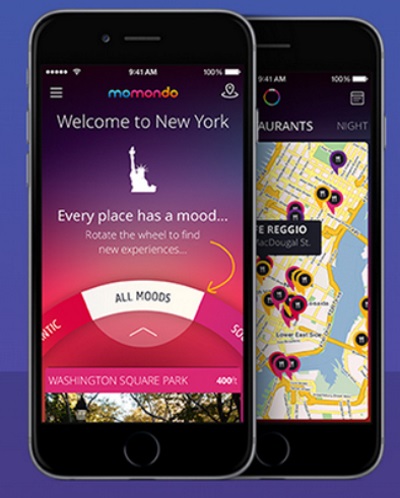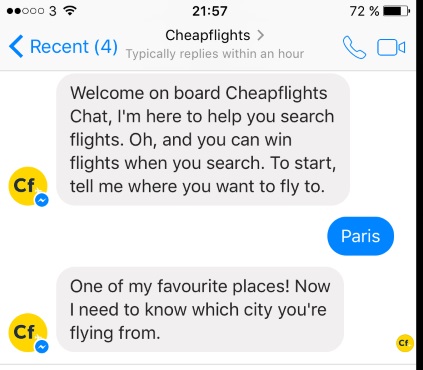
The virtuous circle – inspiration, personalisation and trust
By cameron in Uncategorized
The modus operandi of the travel industry is to leverage promise and exploit curiosity, tapping in to an emotional fear-of-missing-out as it urges us to invest in experiences and exploration that could be in our reach.
NB: This is a viewpoint by Robert Kemp, chief technology officer of Momondo Group.
Establishing this emotional connection with potential and existing customers is always important: it is a key driver for both product loyalty and brand advocacy.
It is also where travel metasearch can miss the point: it isn’t enough to just be about crude, commoditised, price-driven offerings – metasearch brands like ours can and should seek to inspire as well as inform.
Sometimes we describe the idealised user journey around our sites, and their engagement with our brands, in terms of a virtuous circle. Of course, the relationship between inspiration, personalisation and trust is interdependent, and no one aspect exists in complete isolation from the others. Although we could start at any point around the circle, let’s begin with inspiration.
One thing leads to another
Although the raison d’etre of our sites and platforms, at the most basic level, will always be to provide users with the means to efficiently search for an objective view on the cheapest flight or hotel over a given date, the need for us to offer more than pure utility has become increasingly keener as we seek to further grow our community of valuable repeat users.
We continually invest in creating and publishing the highest quality content, delivered through our official channels as well as in our carefully crafted personal communications, designed to inspire travellers about where to travel.
In addition, we also developed a number of interactive elements to further engage with our customers. For example: the momondo mood wheel and Trip Finder interactive tools designed to make the travel research and planning phase more emotional and more personal, and created to inspire curious travellers.

In the next stage of the circle, trust can be built and users retained with content which is appropriately, and sensitively, personalised. In 2016, we introduced functionality to the Cheapflights platform that enabled users to set up a basic personal profile – one of the benefits to those who are logged in being that we’ve been able to start serving relevant content via our email newsletter, linked to their previous site behaviour.
In addition, this approach can be used to engage with users who have not visited the site for long periods. For Cheapflights, we reuse destination blog content via the newsletter in the same way for this purpose, as well as other tactics, such as competitions, to encourage high repeat rates. Last year we began to deploy opt-in mobile notifications for Cheapflights users linked to what they themselves and their data tells us they’re interested in.
When enough trust is earned among customers, the final stage of the circle comes into view: customers signing up to our site and logging in when they visit. At this point, this level of loyalty creates its own ‘mini’ virtuous circle for every single customer. Each and every visit provides richer data for us to use for optimal content personalisation and inspirational suggestions.
Our metasearch business supports this overall proposition by providing objective, transparent results to our users, in an online environment almost completely free from advertising. Our users trust us to serve them with objective and actionable data based only on the searches they have made.
Hierarchy of personalisation
One way that we structure our thinking around earning trust is in terms of five need states:
1. Relevance: the first and most basic requirement.
2. Timeliness and urgency: if a piece of content or data is relevant, is it right for the user’s current needs? How are they feeling when they visit the site or app, and what external influences can be introduced on them?
3. Utility: Is the site meeting the value proposition and driving the user to the call to action?
4. Accessibility: can the user engage with the content or data meaningfully, without anxiety or distraction?
5. Expertise: the ultimate value of the offering/content/data, as well as external validation about the quality of the site.
Together they make up a ‘hierarchy of personalisation’, and we believe that if all of these areas are fulfilled the user will feel we’ve communicated with them in something approaching a personal way.
It is worth noting that although the hierarchy is static, it is in fact a living thing. The need states themselves don’t change, but the relative significance of each does according to the feature or product we’re introducing, and the users we’re looking to reach.
Of course, it needs to be done sensitively. We should be aiming to dig into the data to ensure the user experience feels relevant and targeted while empowering the user to make good decisions, ultimately improving loyalty. We are always striving to bridge the gap between impersonal data and users feeling as if they’re being treated with a human touch.
We feel that good personalisation is not just defined by what we’re saying. The how, when and where of what is said is just as critical.
For example, when we introduced a Facebook Messenger chatbot in October 2016, it allowed users on that platform to engage with us from a comfortable environment, and talk to us as if we were one of their Facebook friends.

It means we can benefit by association from the trust equity that users have invested in that platform, as well as hitting the aforementioned need states of accessibility, timeliness and urgency (the responses are near enough instant), utility and relevance.
We also include other data feeds, including weather and currency information, to further drive trust and utility.
Since launch, it’s generated 32,000 flight searches within the bot itself, and there are currently 20,000 active chat threads – more than double the average for other Messenger bots.
Bots themselves are in their early days and the jury is out on whether they’ll become a significant revenue driver across the travel sector – but as another tool in the box to engage with our users and help them feel as if we’re talking just to them, to help us hit those need states and build trust, ours is already showing its value.
Long-term needs
We believe that the end state of personalisation is to attract and retain customers, by winning their trust and loyalty, and earning their repeat visits. It’s imperative to think carefully about the need states that underpin those concepts and how you are achieving them as a travel metasearch brand.
Of our 25 million monthly visits, approaching 60% are made by repeat users – much higher than the industry average. But we know we have work to do though – personalisation in travel search is a complex, stimulating challenge, but one that is ultimately worth the energy and commitment to get right.
This is a journey, for us and our industry, so we love feedback, discussion and engagement: please do get involved in the comments below.
NB This is a viewpoint by Robert Kemp. chief technology officer for Momondo Group. It is the latest in a series of articles published as part of Tnooz’s sponsored content initiative.
The other articles in the Momondo Group series are:
- Personalised inspiration: empowering ultimate travel search (Jan17)
- Personalisation in travel search: inspiration, the momondo way (Feb17)
- Personalisation in travel search: the human touch in UX (Feb17)
Momondo Group also sponsored a free Tnooz Report entitled “The Role of Personalisation in Travel Search – Inspiring Loyalty with the Human Touch”. Click here to read a summary and to download the PDF.
![]()

